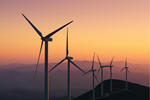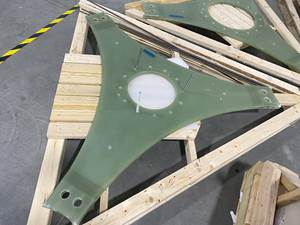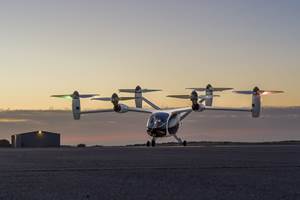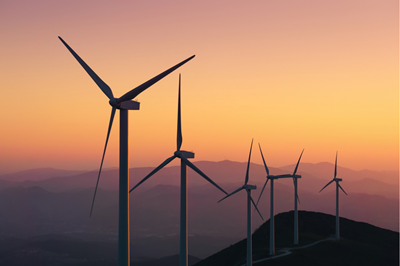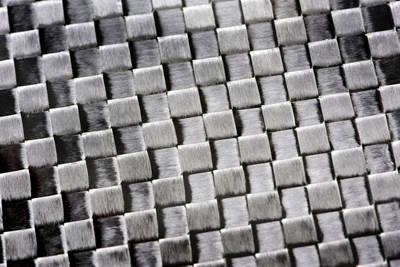White House to jumpstart offshore wind energy projects
New leasing, funding and development goals announced to accelerate and deploy offshore wind energy at scale and strengthen the domestic supply chain.
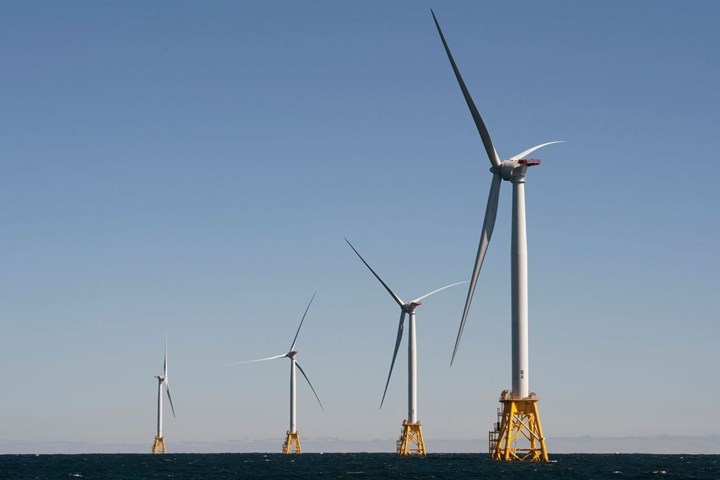
Photo Credit: Don Emmert/Agence France-Press/Getty Images
On March 29, the White House announced a set of actions to jumpstart the country’s offshore wind industry and strengthen the domestic supply chain. This includes the announcement of new leasing, funding and goals, actions that are in accordance to Biden’s Executive Order issued Feb. 24 for the building of new infrastructure and a clean energy economy.
The Administration reports that it is taking the following coordinated steps to support rapid offshore wind deployment and job creation:
- Advance ambitious wind energy projects to create good-paying, union jobs.
- Investing in U.S. infrastructure to strengthen the domestic supply chain and deploy offshore wind energy.
- Supporting critical research and development (R&D) and data-sharing.
Advance ambitious wind energy projects:
- Announcing a new Wind Energy Area. The Interior Department’s Bureau of Ocean Energy Management (BOEM) is announcing a new priority Wind Energy Area (WEA) in the New York Bight — an area of shallow waters between Long Island and the New Jersey coast — which a recent study from Wood Mackenzie shows can support up to 25,000 development and construction jobs from 2022 to 2030, as well as an additional 7,000 jobs in communities supported by this development. The study indicates the New York Bight lease area also has the potential to support up to 4,000 operations and maintenance jobs annually, and approximately 2,000 community jobs, in the years following. The next step is for BOEM to publish a Proposed Sale Notice, followed by a formal public comment period and a lease sale in late 2021 or early 2022.
- Establishing a target of employing tens of thousands of workers to deploy 30 GW (30,000 MW) of offshore wind by 2030. The Departments of Interior (DOI), Energy (DOE) and Commerce (DOC) are announcing a shared goal to deploy 30 GW of offshore wind in the U.S. by 2030, while protecting biodiversity and promoting ocean co-use.
- DOI action to unlock deployment potential: To position the domestic offshore wind industry to meet the 2030 target, DOI’s BOEM plans to advance new lease sales and complete review of at least 16 construction and operations plans (COPs) by 2025, representing more than 19 GW of new clean energy for our nation.
- Supply chain benefits of deploying offshore wind energy at scale: Meeting the 2030 target will catalyze supply chain benefits, including new port upgrade investments totaling more than $500 million; one to two new U.S. factories for each major wind farm component including wind turbine nacelles, blades, towers, foundations and subsea cables; additional cumulative demand of more than seven million tons of steel — equivalent to four years of output for a typical U.S. steel mill; and the construction of four to six specialized turbine installation vessels in U.S. shipyards, each representing an investment between $250 and $500 million.
- Implications of meeting the 2030 goal: Achieving this target also will also reportedly unlock a path to 110 GW by 2050, generating 77,000 offshore wind jobs and more than 57,000 additional jobs in communities supported by offshore wind activity.
- Advancing critical permitting milestones for the Ocean Wind Offshore Wind Project. BOEM is announcing a Notice of Intent (NOI) to prepare an Environmental Impact Statement (EIS) for Ocean Wind (New Jersey, U.S.), putting it in line to become America’s third commercial scale offshore wind project. Ocean Wind has proposed an offshore wind project with a total capacity of 1,100 MW — enough to power 500,000 homes across New Jersey. BOEM previously announced environmental reviews for Vineyard Wind (New Bedford, Mass., U.S.) and South Fork (R.I., U.S.), and anticipates initiating the environmental reviews for up to ten additional projects later this year.
Investing in U.S. infrastructure to strengthen the domestic supply chain and deploy offshore wind:
- Investing in port infrastructure to support offshore wind. The U.S. Department of Transportation’s (DOT) Maritime Administration has announced a Notice of Funding Opportunity for port authorities and other applicants to apply for $230 million for port and intermodal infrastructure-related projects through the Port Infrastructure Development Program. Port Infrastructure Development Grants support projects that strengthen and modernize port infrastructure, and can support shore-side wind energy projects, such as storage areas, laydown areas and docking of wind energy vessels to load and move items to offshore wind farms. In addition to supporting our nation’s long-term economic vitality, DOT’s review process will consider how proposed projects can most effectively address climate change and environmental justice imperatives.
- Access to $3 billion in debt capital to support offshore wind industry through DOE loan programs office. DOE’s Loan Programs Office (LPO) released a fact sheet to facilitate access for the offshore wind industry for $3 billion in funding through LPO’s Title XVII Innovative Energy Loan Guarantee Program. The fact sheet signals that LPO is open for business and ready to partner with offshore wind and offshore transmission developers, suppliers and other financing partners to scale the U.S. offshore industry and support well-paying jobs. To date, LPO has provided $1.6 billion in support of projects totaling about 1,000 MW of onshore wind.
Supporting critical research and development (R&D) and data-sharing:
- Announcing offshore wind R&D funding through the National Offshore Wind R&D Consortium. The National Offshore Wind Research and Development Consortium (NOWRDC), created by the DOE and the New York State Energy Research and Development Authority (NYSERDA), is announcing the award of $8 million to 15 offshore wind research and development projects that were selected through a competitive process. The new projects will focus on offshore support structure innovation, supply chain development, electrical systems innovation and mitigation of use conflicts that will help reduce barriers and costs for offshore wind deployment.
- Partnering with industry on data-sharing. The Department of Commerce’s National Oceanic and Atmospheric Administration (NOAA) is signing a memorandum of agreement (MoU) with Ørsted (Fredericia, Denmark), an offshore wind development company, to share physical and biological data in Ørsted-leased waters subject to U.S. jurisdiction. This agreement is said to be the first of its kind between an offshore wind developer and NOAA, and paves the way for future data-sharing agreements that NOAA expects to enter into with other developers. NOAA anticipates that Ørsted’s and other companies’ data will fill gaps in ocean science areas — particularly in ocean mapping and observing — in service of NOAA’s mission to advance climate adaptation and mitigation, weather-readiness, healthy oceans and resilient coastal communities and economies.
- Studying offshore wind impacts. NOAA’s Northeast Sea Grant programs, in partnership with DOE, DOC and NOAA’s Northeast Fisheries Science Center, is releasing a request for research proposals to support more than $1 million in grant funding to improve understanding of offshore renewable energy for the benefit of a diversity of stakeholders, including fishing and coastal communities. Grant funding will support objective community-based research in the northeast to further understanding of the effects of offshore renewable energy on the ocean and local communities and economies as well as opportunities to optimize ocean co-use.
“For generations, we’ve put off the transition to clean energy and now we’re facing a climate crisis. It’s a crisis that doesn’t discriminate — every community is facing more extreme weather and the costs associated with that,” says Secretary of Interior, Deb Haaland. “But not every community has the resources to rebuild, or even get up and relocate when a climate event happens in their backyards. The climate crisis disproportionately impacts communities of color and low-income families. As our country faces the interlocking challenges of a global pandemic, economic downturn, racial injustice and the climate crisis, we have to transition to a brighter future for everyone.”
Related Content
Infinite Composites: Type V tanks for space, hydrogen, automotive and more
After a decade of proving its linerless, weight-saving composite tanks with NASA and more than 30 aerospace companies, this CryoSphere pioneer is scaling for growth in commercial space and sustainable transportation on Earth.
Read MoreRTM, dry braided fabric enable faster, cost-effective manufacture for hydrokinetic turbine components
Switching from prepreg to RTM led to significant time and cost savings for the manufacture of fiberglass struts and complex carbon fiber composite foils that power ORPC’s RivGen systems.
Read MoreHexagon Purus opens new U.S. facility to manufacture composite hydrogen tanks
CW attends the opening of Westminster, Maryland, site and shares the company’s history, vision and leading role in H2 storage systems.
Read MoreHow composites have become a necessity
Composites used to be one of many material options across industries and applications, but that's not the case anymore.
Read MoreRead Next
GWEC report indicates wind industry resilience, but a need to triple installation for net zero
Despite marking 2020 as the best year in history for the global wind industry, GWEC warns that new wind power capacity needs to be installed three times faster over the next decade to achieve global climate targets.
Read MoreWhite House Executive Order to build supply chain resilience for carbon fiber
Commitment to comprehensively address U.S. supply chain risks highlights carbon fiber as one of four key products that will be reviewed.
Read MoreVIDEO: High-volume processing for fiberglass components
Cannon Ergos, a company specializing in high-ton presses and equipment for composites fabrication and plastics processing, displayed automotive and industrial components at CAMX 2024.
Read More

